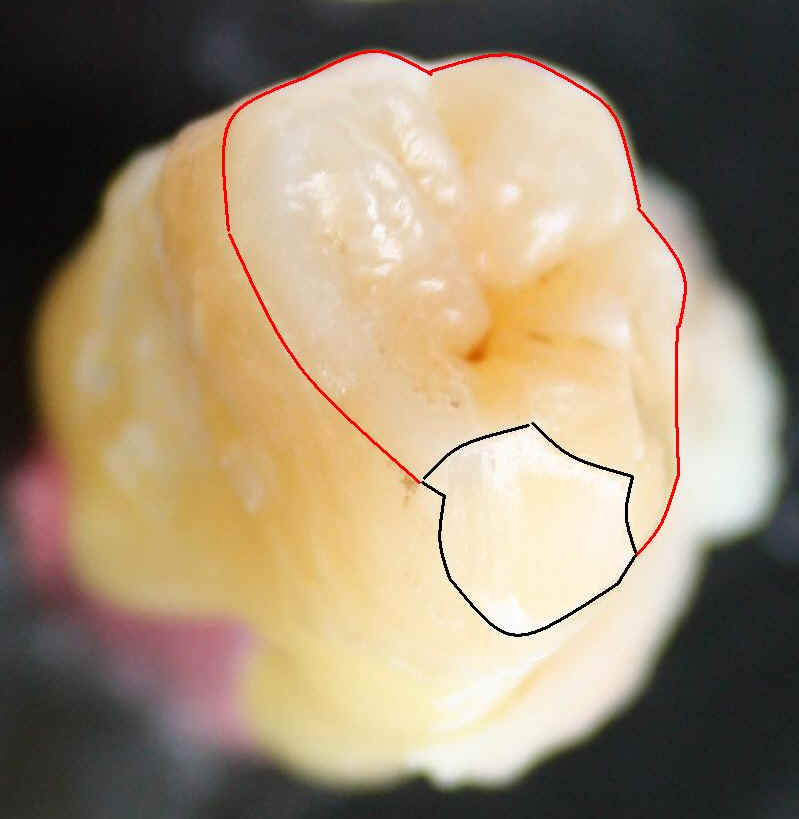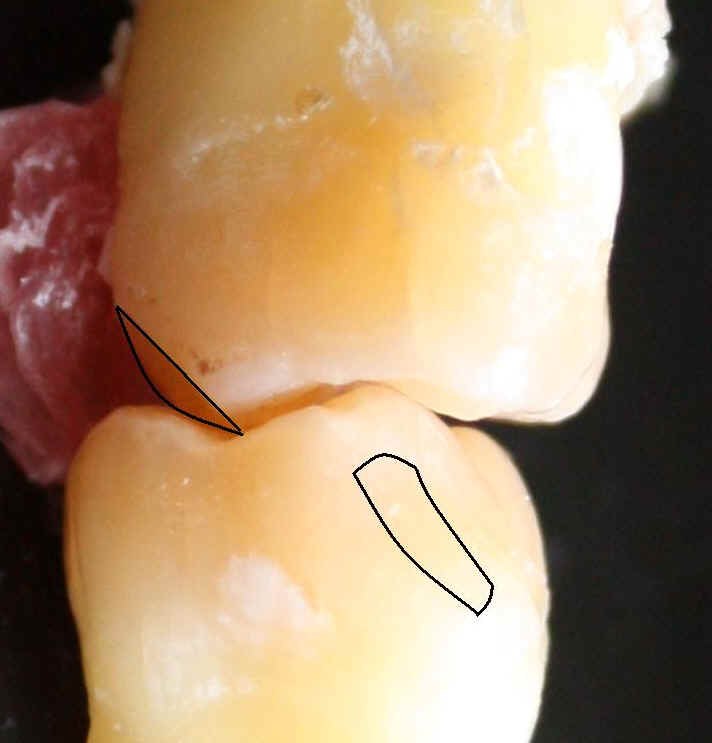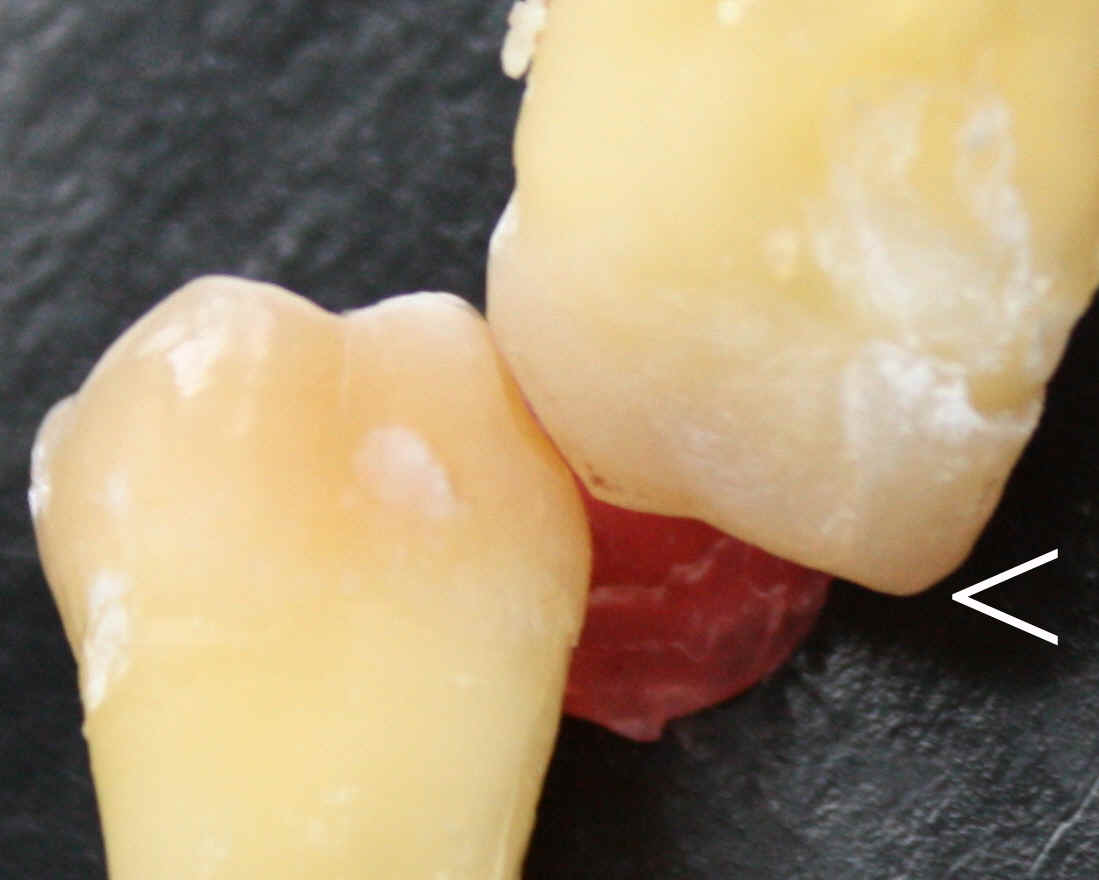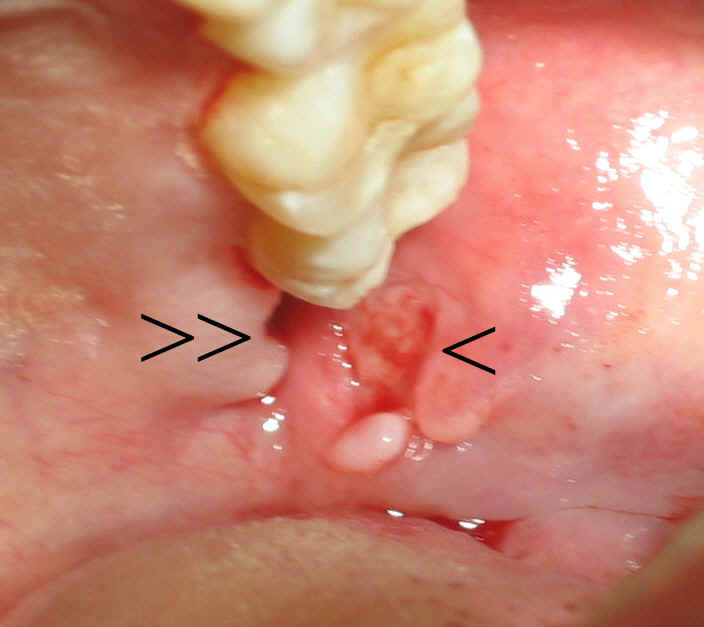 |
|
|
Fig.1 |
Fig.2 |
 |
 |
|
Fig.3 |
Fig.4 |
 |
|
|
Fig.5 |
Fig.6 |
 |
|
|
Fig.1 |
Fig.2 |
 |
 |
|
Fig.3 |
Fig.4 |
 |
|
|
Fig.5 |
Fig.6 |
Dental Education Lecture: No Use of Wisdom Teeth
Over thousands upon thousands of years, our food have become sophisticated. Our jaws have become smaller and smaller, but our teeth remain the same in size. Our jaws gradually cannot hold all of our teeth. Since wisdom teeth are the last to come out, they do not have space for them. They may grow out in the wrong place and cause a lot of problems. It is more difficult to remove wisdom teeth at older age with more trauma and complications.
Mr. Lin requests extraction of two wisdom teeth, because they cause food impaction. Careful examination shows that they are no use for chewing. Let us show you why. Fig. 1 reveals the biting surface of the upper wisdom tooth (red line). The black line depicts a wear facet. This is the area Mr. Lin use to chew. Since it is small, it is worn quick and becomes flat. You can see how small it is as compared to the biting surface (red line), which Mr. Lin is supposed to use to chew. We use the same methods to denote the biting surface and wear facet for the bottom wisdom teeth (Fig.2).
As usual, the top and bottom wisdom teeth should bite against each other as demonstrated in Fig.3, like pestle and mortar. The wear facets are also shown in Fig.3 in black. Let us move the top tooth to the right until the two wear facets meet each other (Fig.4). This is how Mr. Lin's wisdom teeth kiss/touch each other. You can see how ineffectively they chew.
The top wisdom tooth is usually closer to the cheek when it is in bad position. The cheek end of the top wisdom tooth is pretty sharp (arrow in Fig.4). Sometimes it may bite into our cheek if we chew a little bit too quick. It can lead to a large ulcer with severe pain (Fig.5 single arrow). We need to remove the top wisdom tooth (double arrows in Fig.5) in order to show the ulcer in another patient. Once the offending tooth is gone, the ulcer heals completely in two week (Fig.6).
When the wisdom teeth are in bad position, we can not clean them very well. Sooner or later we have cavities and gum disease.
Xin Wei, DDS, PhD, MS 1st edition 07/15/2009, last revision 12/20/2009